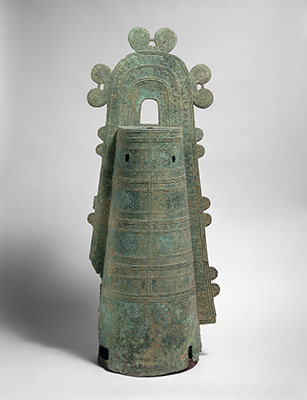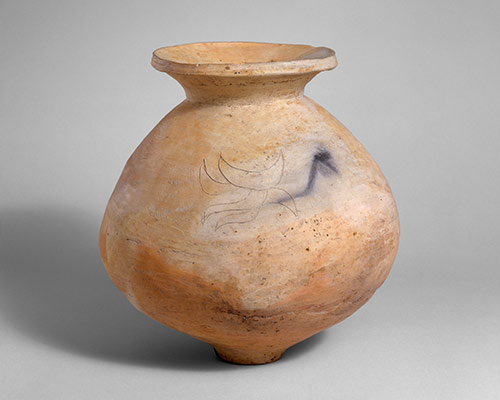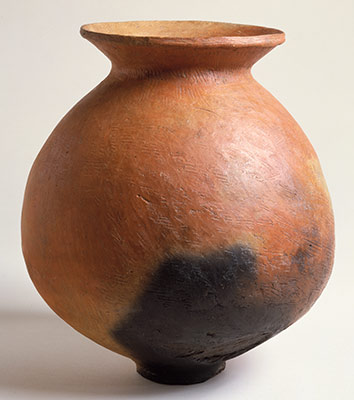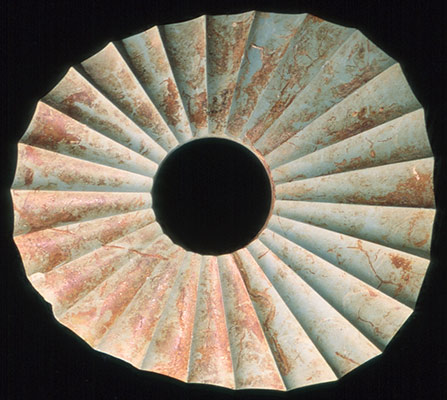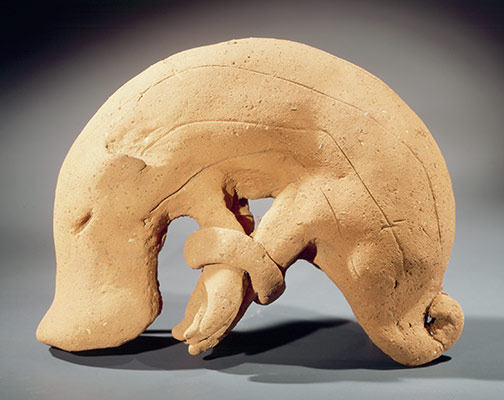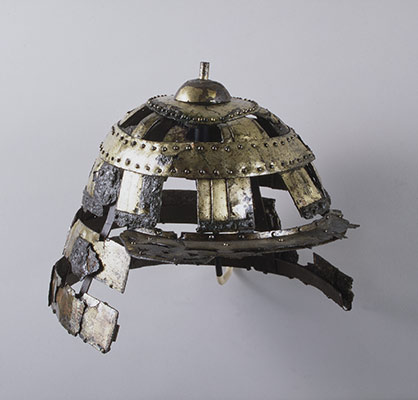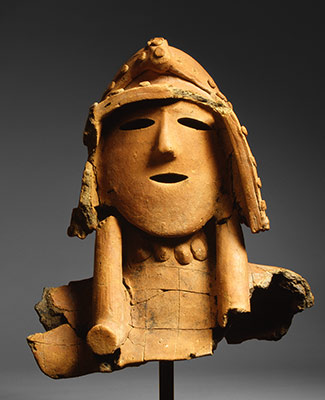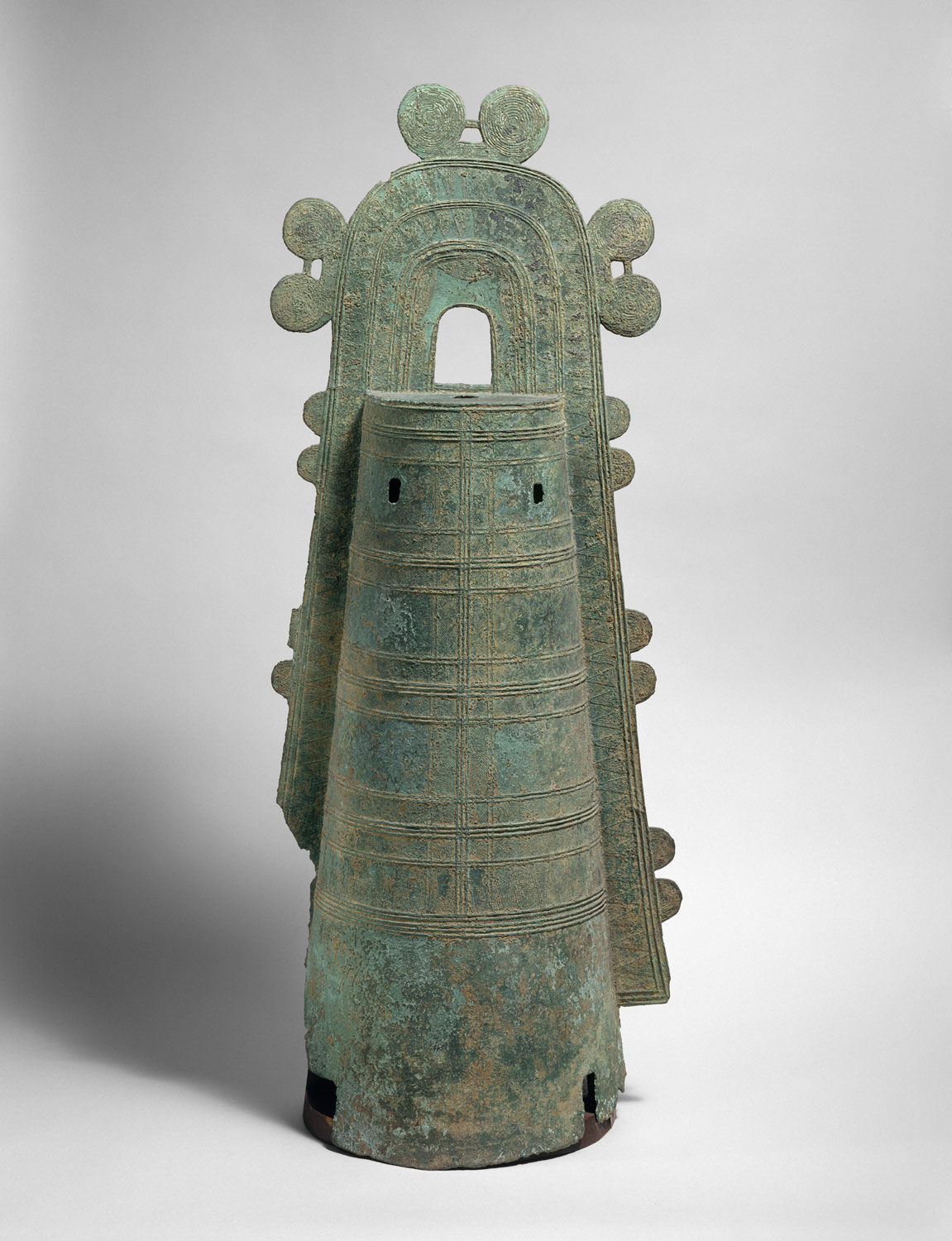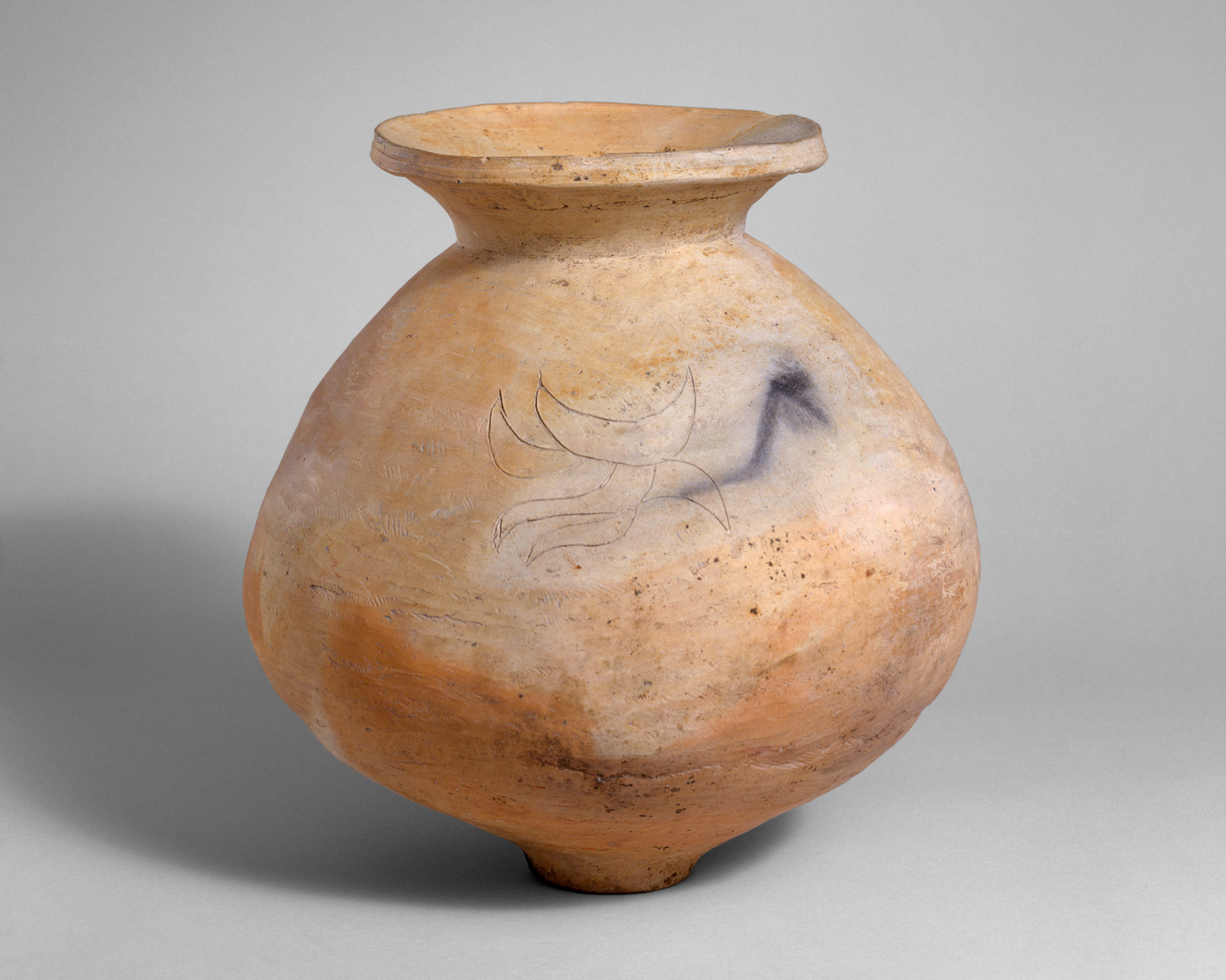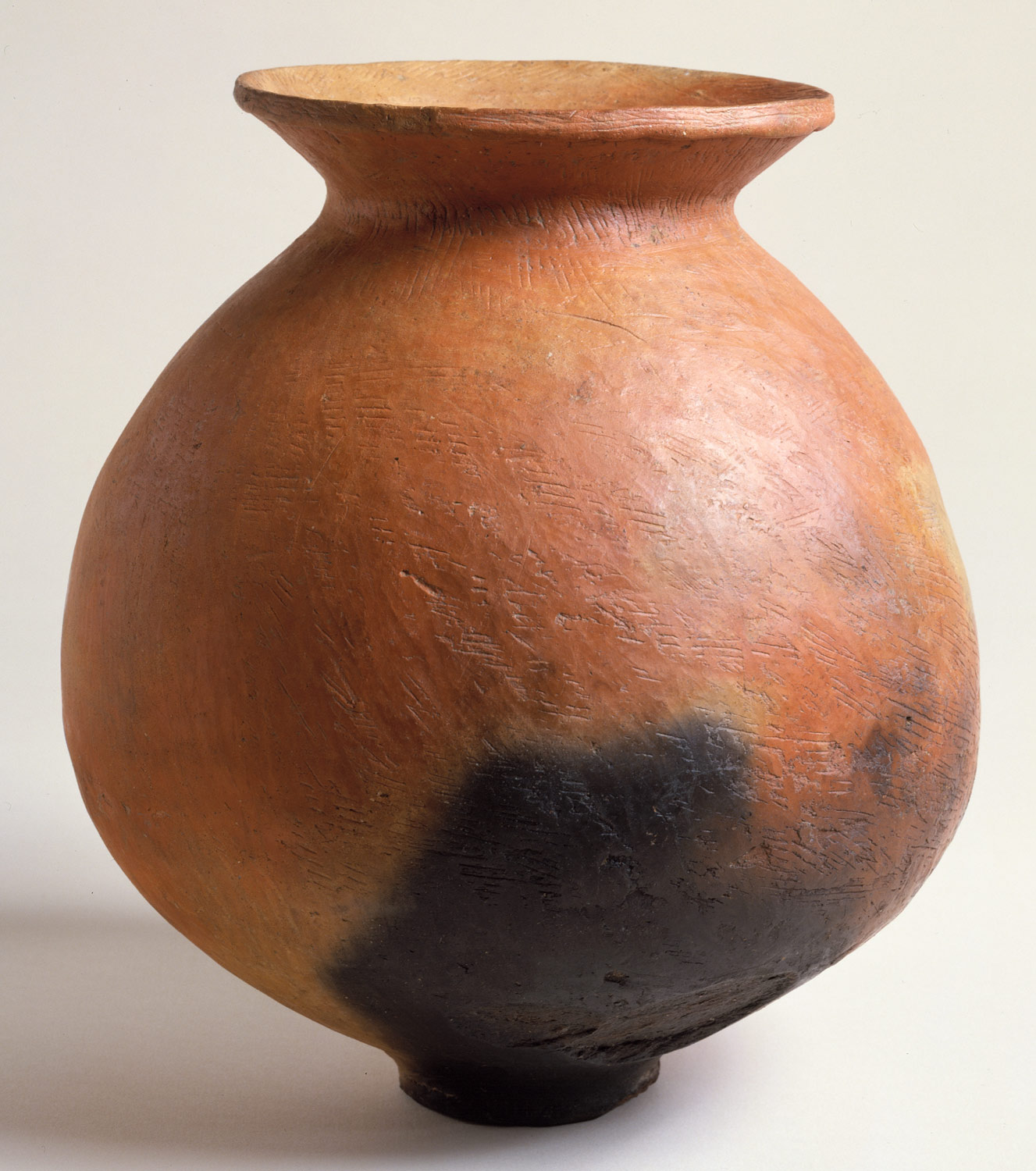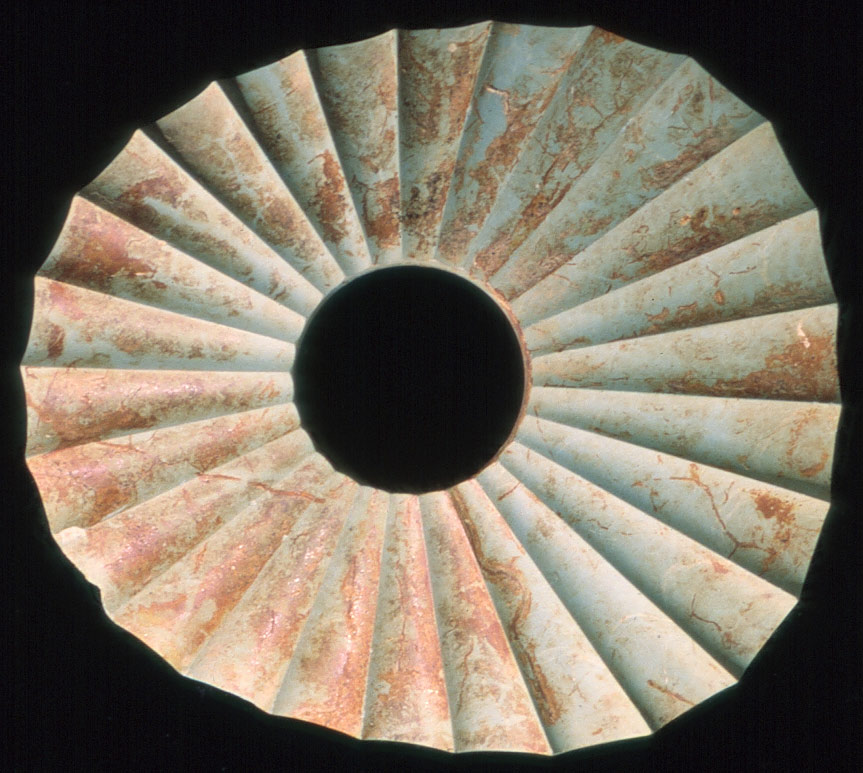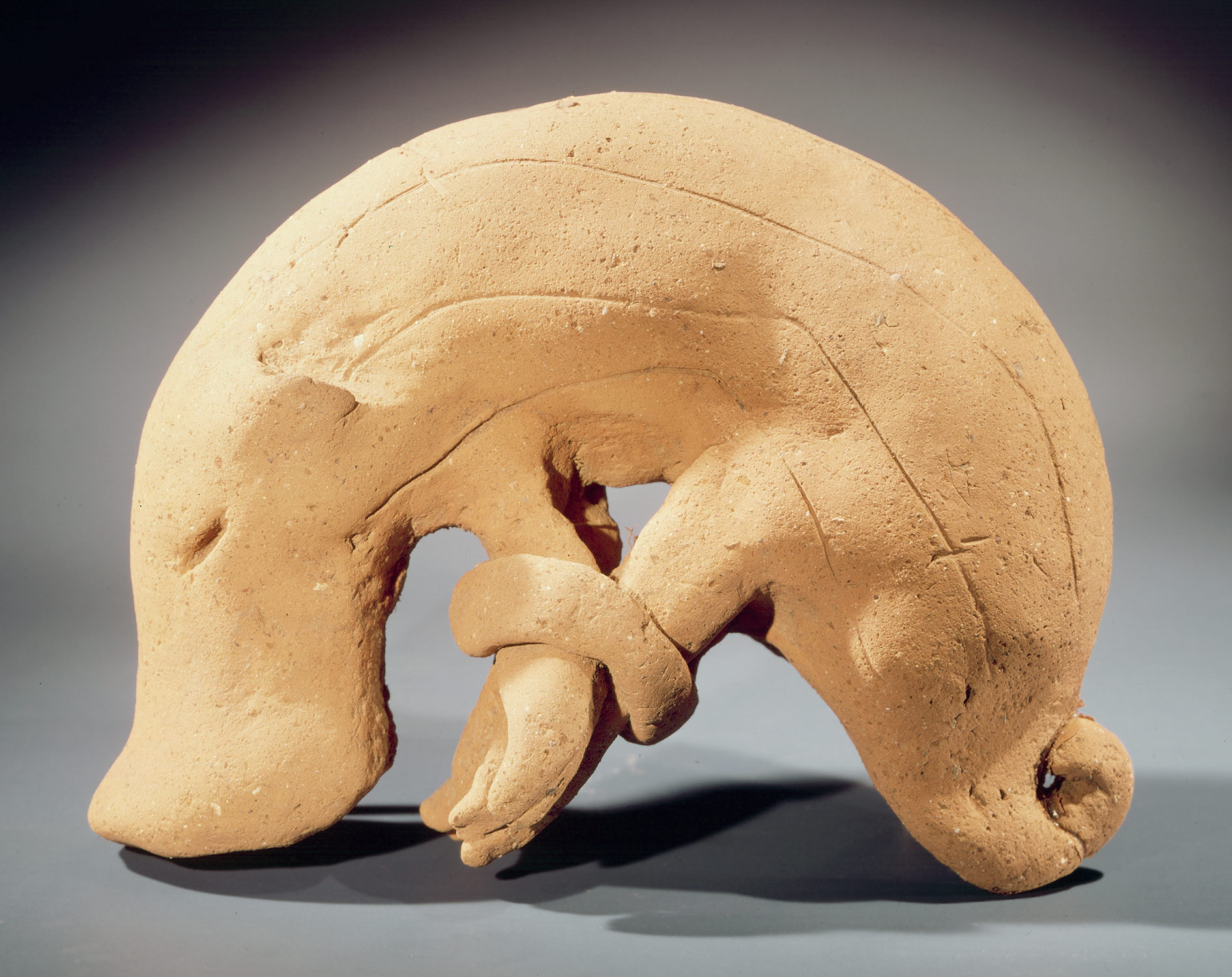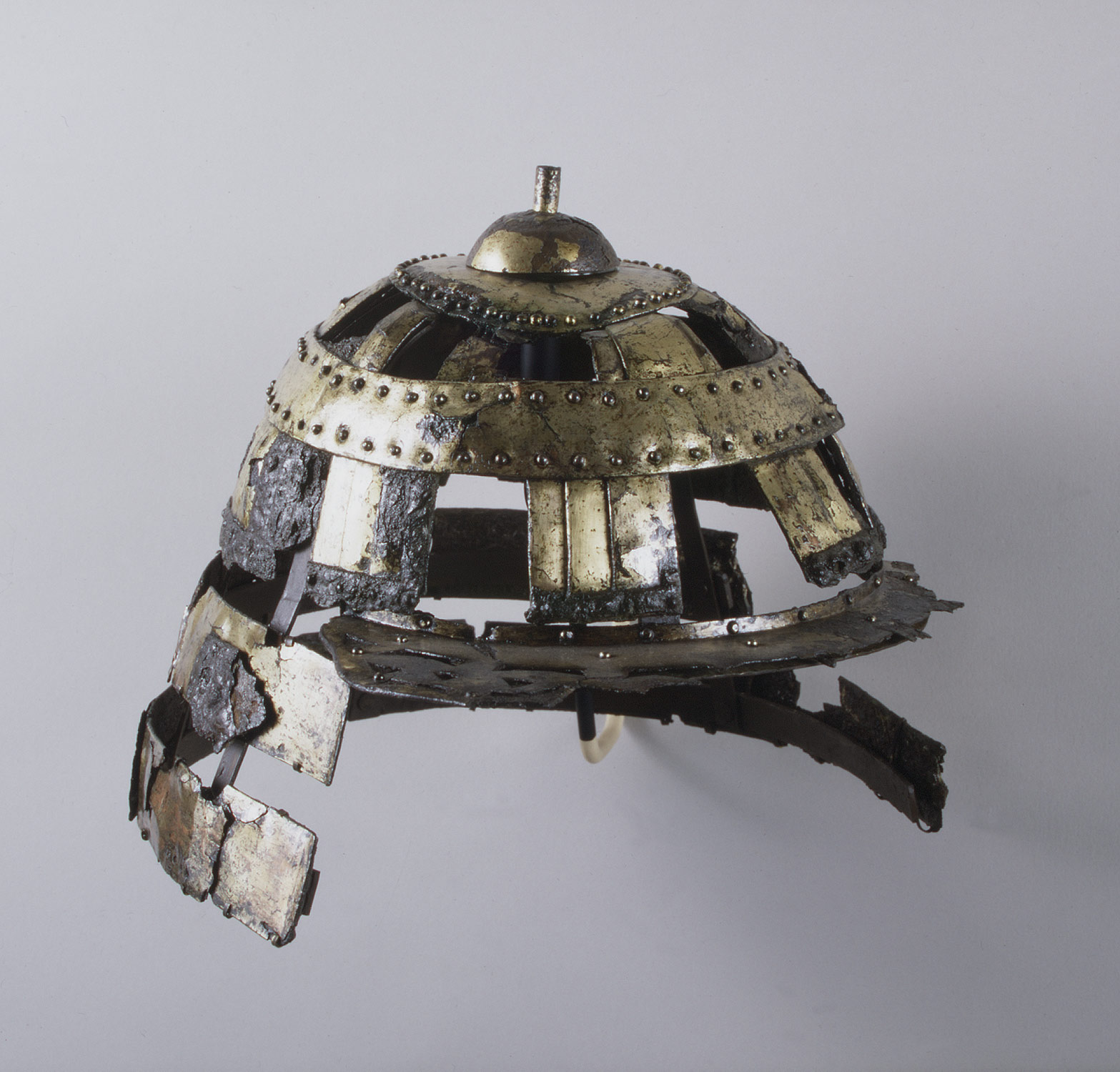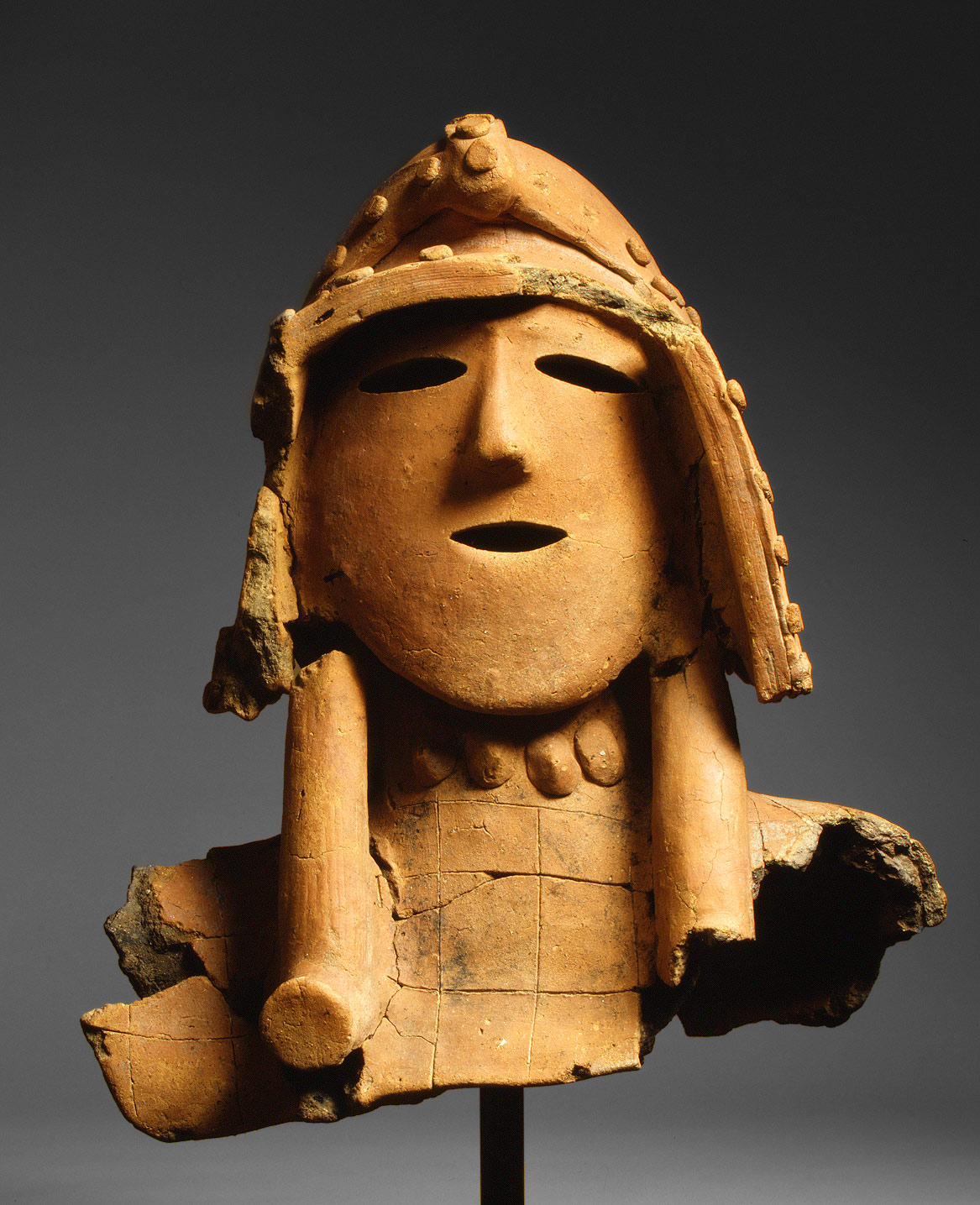Around the third century A.D., the practice of building sepulchral mounds and burying treasures with the dead is transmitted to Japan from the continent. The next three centuries are known as the Kofun period, so-named for the many large mounded tombs (kofun) that are built during this time. These gigantic tombs, the legacy of a society moving toward unification, symbolize the power of the central governing class.
Japan, 1–500 A.D.
Timeline
1 A.D.
125 A.D.
125 A.D.
250 A.D.
250 A.D.
375 A.D.
375 A.D.
500 A.D.
Overview
Key Events
-
57 and 107 A.D.
According to the Chinese official records, the Houhanshu and the Weizhi, emissaries are sent from Japan—or Wa, as termed by the Chinese—to the Chinese Han-dynasty court. The envoys present woven cloth, jade, pearls, cinnabar, bows and arrows, and slaves, and receive brocade, silk, gold, swords, bronze mirrors, and jade and red beads in return. Historical records mention similar missions sent to Daifang in western Korea in the years 238 and 247 A.D.
-
ca. 100–300 A.D.
Sedentary farming villages gradually increase in size and social stratification, developing into relatively complex political units, or clan-nations. According to Chinese historical records, these emerging states fight among themselves throughout this period.
-
ca. 300 A.D.
The practice of building monumental sepulchral mounds and burying treasures—including bronze mirrors, tools, weapons, personal ornaments, horse trappings, and clay vessels—with the dead is transmitted to Japan from the Asian continent. The burial mounds are encircled with stones and surrounded and covered by cylindrical pedestals made of clay (haniwa).
-
ca. 350–500 A.D.
Haniwa, “clay cylinders” placed on and around the tomb mounds of the ruling elite, begin to evolve from their initial appearance as offering stands into modeled objects such as shields, boats, and houses. In the fifth century A.D., these objects are replaced by representations of humans and later of animals.
-
ca. late 300s–early 400s A.D.
High-fired gray pottery is introduced from Gaya Federation in Korea to Japan, where it is initially produced by or with the help of immigrant potters for the ruling elite. This ware, known in Japan as Sueki (or Sue), is made using the potter’s wheel and fired in a single tunnel-like chamber kiln (anagama) built along a hill slope and able to reach 1100–1200ºC, temperatures high enough for stoneware and porcelain.
-
After an extended period of interregional competition and warfare, the Yamato clan emerges as the dominant political force, winning control over much of Honshū island and the northern half of Kyūshū. The construction of many tomb mounds (kofun) of monumental proportions during this period symbolizes the increasingly unified power of the governing class.
Citation
